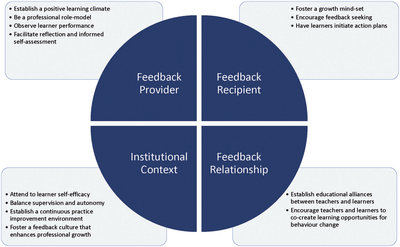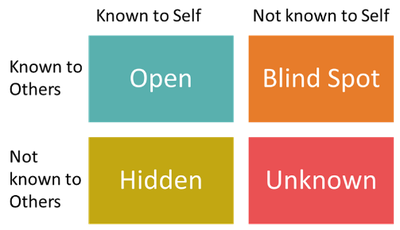Promoting a Feedback Culture Part 1: Providers and Recipients
There is widespread dissatisfaction among learners regarding feedback. Most feel they don't receive actionable feedback on their performance, and about one-third of the time, feedback impairs performance by threatening self-esteem resulting in disengagement.
Faculty also have problems with feedback. Are you reluctant to give feedback to learners about their performance in the clinic, in the operating room, in the lab, in the hospital? Are you afraid of offending them or damaging your relationship with them? Are you unsure of how best to approach this part of your job and defer to generalizations? As medical educators, our learners are desperate for our feedback, especially if it is timely, actionable, well-delivered, and tailored to improve learner performance. If these issues have been a problem for you, you are far from alone in these concerns. If we are to make UofL a Great Place to Learn, we must consider how we deliver (and how our learners receive) our feedback and ask, “Is there a better way to do this?”.

A 2019 publication (MEDICAL TEACHER 2019, VOL. 41, NO. 6, 625–631 https://doi.org/10.1080/0142159X.2018.1432850) may help us see how to promote a feedback culture in our medical center with tips directed to feedback providers, feedback recipients, the feedback relationship, and the institutional context within which feedback is provided and received. This paper reviews the latest research “which redefines feedback as a sociocultural process and generated practical strategies that teachers, learners as well as institutions can adopt to promote feedback aimed at professional development”. This illustration from the paper looks at these strategies from multiple perspectives:
For Feedback Providers
Tip 1: Establish a positive learning climate and be a professional role model. Use frequent, formative feedback conversations that focus on goals and observed performance. Think of this kind of approach like a sports coach, reacting at the moment providing feedback to the learner (as opposed to the summative feedback that occurs at the end of a clinical rotation or course). Be willing to admit your knowledge limitations and use two-way conversations to demonstrate your willingness to accept feedback from learners.

Tip 2: Use direct observation of performance to generate feedback data. Our learners are rarely observed directly in their interactions with patients and families. By directly observing them in action, the credibility of our feedback is enhanced. Can you imagine a music teacher relying on the student’s report on how they played a song rather than listening to them perform? Direct observations drive the credibility of your feedback.
Tip 3: Facilitate reflection and informed self-assessment. Unguided self-assessment is often inaccurate, so consider using a tool like the Johari Window (see figure) to help you diagnose your learners’ insights (or lack of) into their strengths and weaknesses. By applying this model to feedback, we would seek to expand the open quadrant (reinforce strengths), reduce the blind spot (encourage feedback-seeking and learner-established goals), narrow the hidden quadrant, (building trusting relationships), and shrink the unknown quadrant (stimulate a spirit of self-discovery).
For Feedback Recipients
Tip 4: Foster a growth mindset among learners. Learners can have either a fixed or a growth mindset. Those with a fixed mindset tend to reject constructive feedback and believe that success is a result of innate ability, and failure reflects their lack of ability. Learners with a growth mindset are accepting of constructive feedback, believe that success is a result of hard work and that learning comes from failure. As educators, we can help to foster a growth mindset (you can’t do it….yet), by using specific words that focus on performance rather than simply praising or judging the observed skill, task, or knowledge/critical thinking exercise.
Tip 5: Encourage feedback-seeking behavior. Learners that focus on performance to impress faculty may not welcome feedback that surfaces their areas in need of improvement. Whereas learners who are committed to mastery of learning goals are more likely to seek and accept constructive feedback that helps them achieve their goals. By gaining awareness of their strengths and weaknesses through feedback-seeking behavior, learners can better define the gap between what they know and can do now and their desired performance capability.
Tip 6: Promote learner-initiated action plans for behavior change. It is best if the adult learner develops their plan for performance improvement, mapping out the steps to take them from their current state to the desired state. This is consistent with our mandate from our accrediting bodies to teach our students and residents how to become self-directed learners. By creating their learning plan they are more likely to change behaviors than if the performance-improvement plan is created by the feedback provider.
In Part 2 of Promoting a Feedback Culture, we will look at the next six tips as they relate to the feedback relationship and the institutional context for feedback to be impactful and ingrained into the organization’s culture.
References:
1 Ramani, S., Könings, K. D., Ginsburg, S., & van der Vleuten, C. P. (2018). Twelve tips to promote a feedback culture with a growth mindset: Swinging the feedback pendulum from recipes to relationships. Medical Teacher, 41(6), 625–631. https://doi.org/10.1080/0142159x.2018.1432850